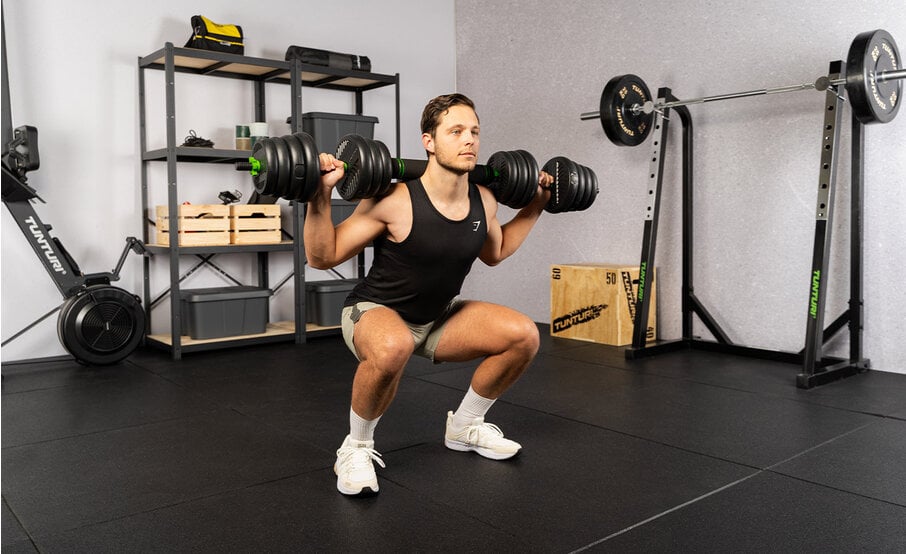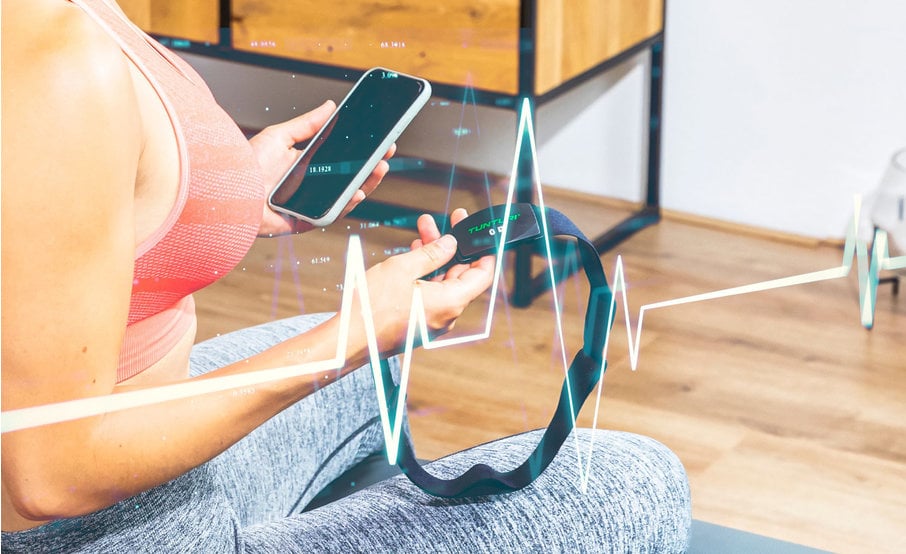Five tips for exercising in and around the workplace
- Posted on

“Sitting is the new smoking.” The saying has been around for quite a while, but it seems to be more relevant than ever. For many of us, it is still a challenge to get enough exercise during working hours. Especially now that we work from home a lot.
What is the recommended amount of exercise?
It is always good to exercise. If all activities that prevent you from sitting still for too long would count as ‘exercise’, then it’s almost impossible to exercise too much. Of course, that only applies if you take the level of intensity into account. In general, the following advice applies:
Exercise 150 minutes a week with a low or moderate intensity or 75 minutes with a high intensity. A combination of low/moderate and high intensity is also possible of course. Spread out the minutes of exercise during the course of a week.
It’s important that you avoid sitting still for too long. That can be a challenge, especially when you work in an office and spend a lot of hours sitting down during a day. The lockdown makes it even more challenging: a lot of people that work from home feel that they are spending more time behind a screen. For work related activities, but also for meetings and casual chats with coworkers. So on average, we’re spending more time ‘sitting still’ than in the office. How can you make sure you still exercise for at least 150 minutes a week? Here are five tips for exercising in and around the workplace.
1. Create space to exercise.
Literally and figuratively. Schedule time in your calendar, 10 minutes per session is already a great start. Create some space where you can exercise, with our without accessories. Stretch your muscles on a fitness or yoga mat. Train your upper body with some dumbbells, a kettlebell or aquabag. Improve your balance with an air stepper pad or balance board. Make simple leg exercises more challenging with the help of resistance bands. It’s all about creating a routine and that is easier to keep up when all your materials are within reach and ready to go.
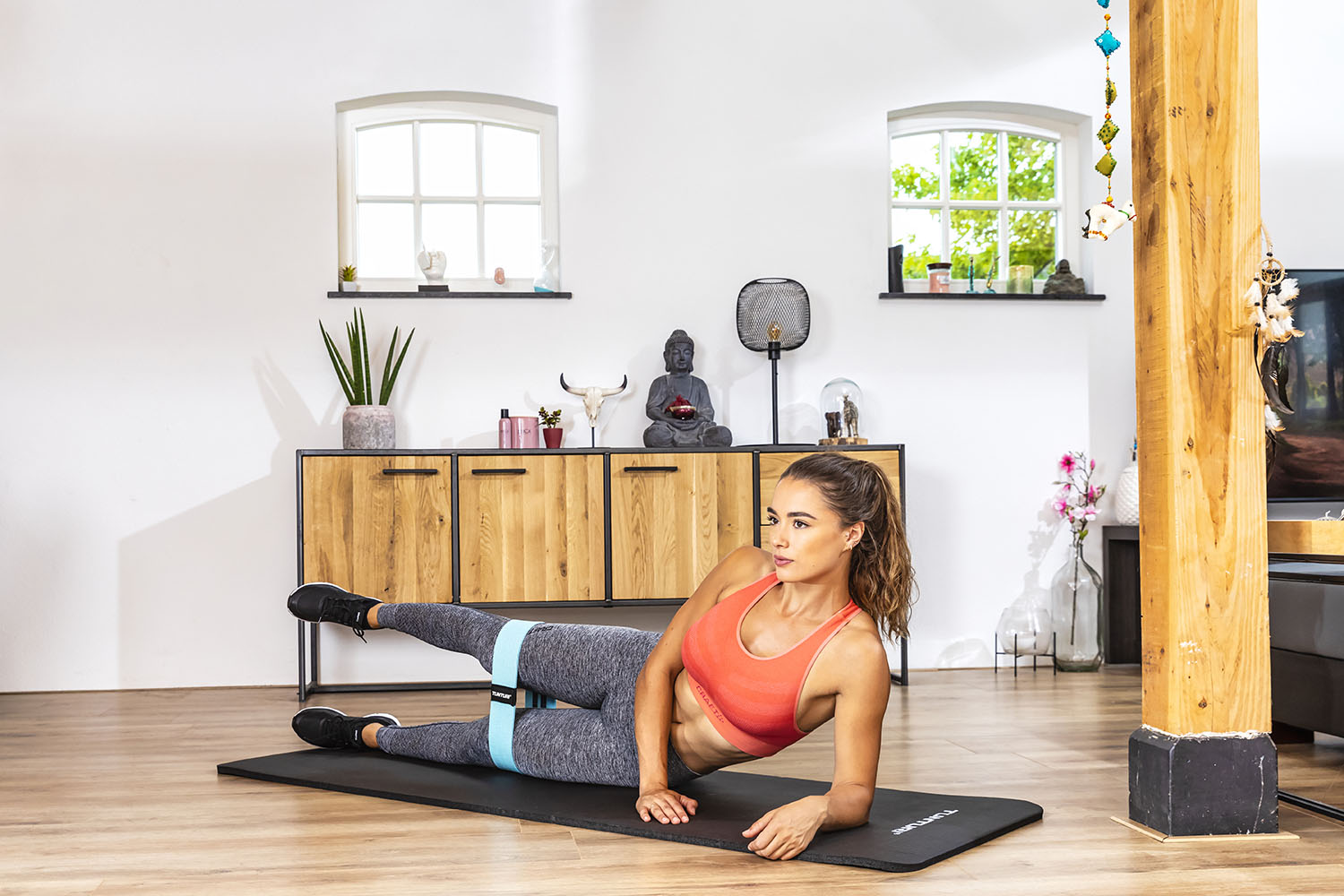
2. Go for a walk
Some people love walking, others are tired of it after months of corona-related restrictions. Still, it can’t be denied: walking is good for your heart, blood vessels, cholesterol, bones, muscles, creativity and productivity. Besides that, there are few activities as accessible as taking a walk around the block. Go by yourself or schedule to go together with a relative or friend. If you prefer to stay indoors, you can always choose to use a treadmill instead. With the videos of Tunturi Routes, a walk (or run) on the treadmill never has to be boring.
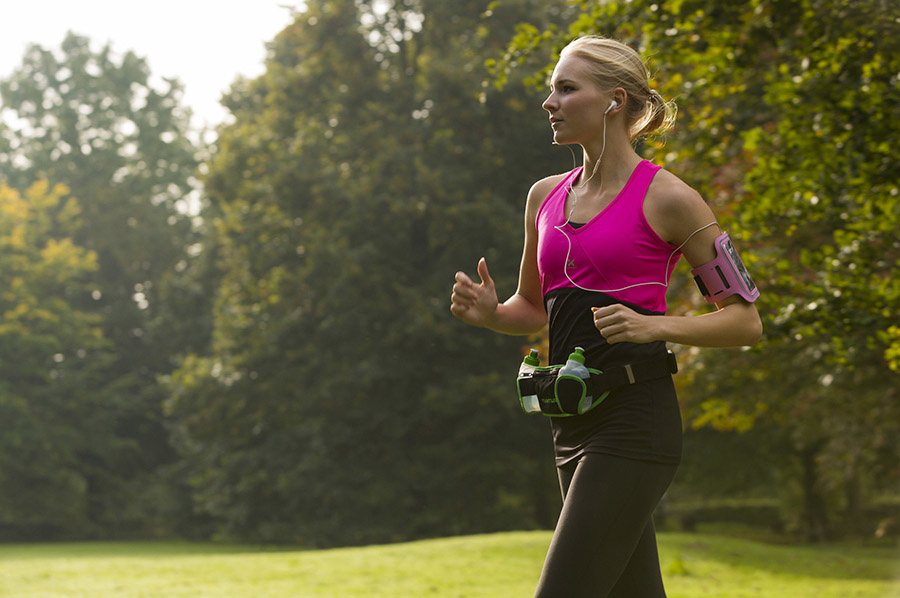
3. Taking the stairs is healthy
“Take the stairs instead of the elevator more often” – it’s a common saying. Still, the effect of taking the stairs is often underestimated. When you’re climbing stairs, you train and strengthen the muscles, joints and bones in your lower body. It also has cardiovascular advantages: you improve the condition of your heart and lungs. Your body has to work against gravity, which makes it a more intense activity than walking. So don’t be afraid to walk to the attic a few times a day. Or take the stairs instead of the elevator to your workplace or own front door.
4. A well-equipped workplace
A good workplace can prevent a lot of physical complaints or injuries. Do you work behind a desk? Then it is important that both of your feet are flat on the ground, with your legs in a 90 degree angle. Ideally, your desk or table has just the right height so your elbows can rest on it. Do you not have the right equipment like a proper chair? Ask your employer or try an alternative. For example, you can transform your gymball into a comfortable office chair and there are are different fitness bikes available, large and small, for under or at your desk.
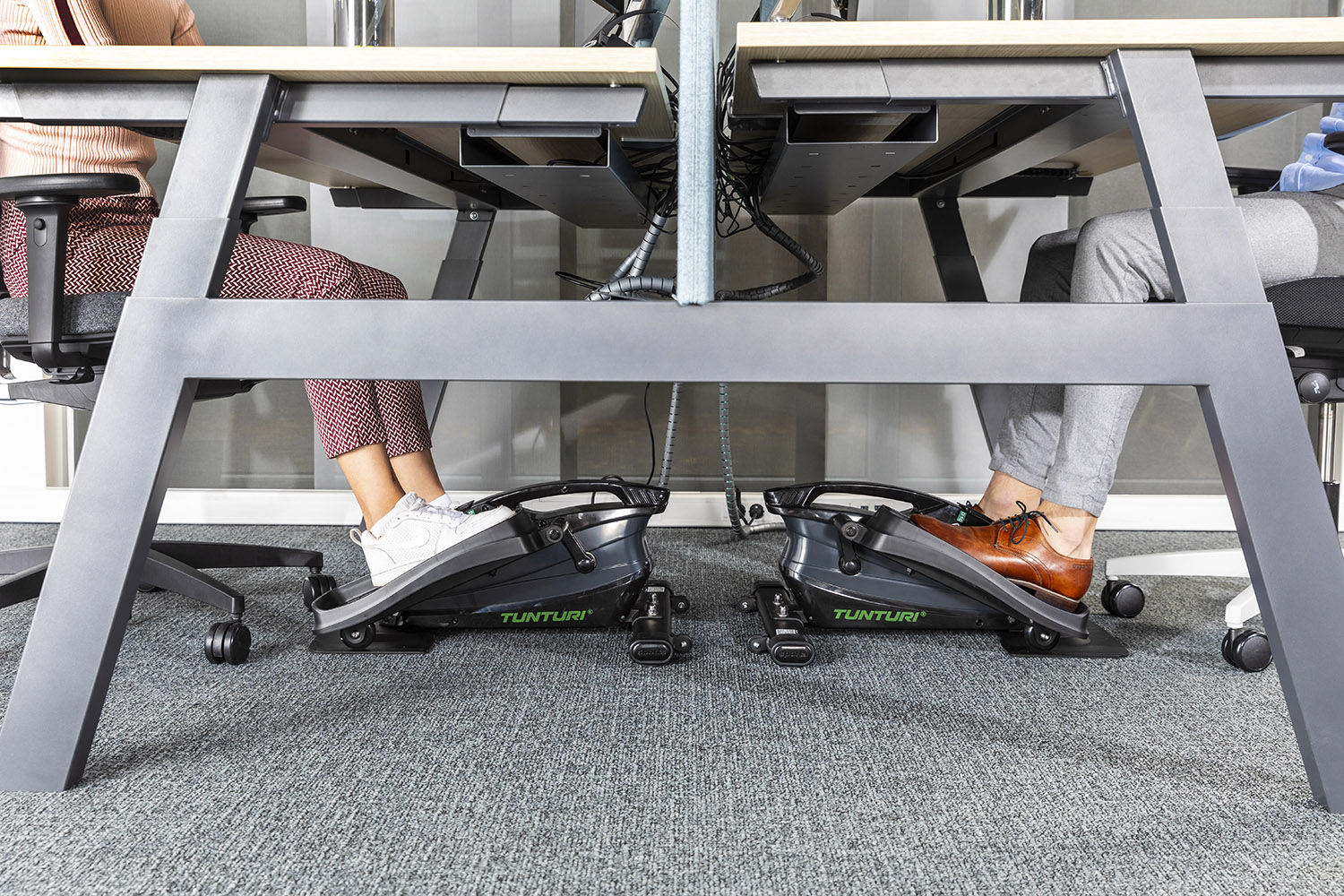
5. Simple office exercises
There are many office friendly exercises that you can perform in between. Looking for inspiration? Here you can find 25 exercises which you can literally do on the spot, without the need for additional accessories or equipment.

